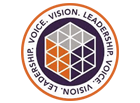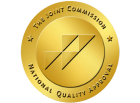If you are in the workforce, or re-entering the workforce, you should keep in mind what type of stressors and environment you will be experiencing. Especially if you are early in recovery, you should be taking into account all of the factors, expectations, and responsibilities that come with the profession you are pursuing. The most important thing to do in recovery, is protect your sobriety by putting your recovery before anything else.
For some job titles, the profession itself may have workplace culture in which using and abusing substances is the norm— you must be weary of these jobs. We’re not saying you shouldn’t pursue any career choices that fall in the following industries, because we believe that if your recovery is strong, you can go anywhere and do anything with confidence in yourself. We just want to bring light to a few industries that seem to have a heavy reliance on drugs and alcohol, so that you can be aware and have a plan for better coping skills than your future co-workers may have.
Workplace Culture
In some industries, drinking alcohol and using drugs is seemingly part of the job. These professions feel that their workplace culture is centered around working hard, and “playing” hard. Think Wolf of Wall Street. Jobs with certain intense factors often build substance abuse into a “justified” level of normalcy. Some workplace cultures are accepting of illicit drugs and heavy drinking, because it is the most common way for workers to cope with the pressure, stressors, endless hours, and other factors of the job itself. Some jobs require workers to entertain clients, go out for drinks, etc. as if substance use is actually part of the job. Entertaining clients or attending events that promote alcohol consumption is normalized to the point that executives across many industries find that these situations simply just fall under their work responsibilities.
Industry Indicators
Several factors can contribute to the propensity to abuse drugs and alcohol. Many work environments can be highly stressful or demanding, which leads some employees to poor coping skills— like using drugs or alcohol.
Factors that influence substance abuse in the workplace:
- wages
- workplace culture
- geography (city vs. rural)
- working hours
- stressors
- high-turnover positions
- high-pressure
What Qualifies Someone for a Substance Use Disorder?
Different substances have their own criteria for diagnosing alcohol and substance use disorders, which all follow a more general outline of signs and symptoms. According to the Diagnostic and Statistical Manual of Mental Disorders defines a substance use disorder as having met two or more of the following symptoms within the past year:
In the past 12-months, have you…
- used larger amounts of a substance or for a longer period than initially intended?
- made one or more attempts to quit, lessen, or control use of a substance?
- spent a lot of time planning use, acquiring the substance, and using the substance?
- neglected or were unable to fulfill roles or major obligations at work, home, or school due to substance use?
- experienced a strong urge, or craving, to use the substance?
- given up activities you once enjoyed, to use the substance?
- had physical or psychological problems probably caused or exacerbated by your substance use?
- continued to use the substance in physically hazardous situations? (i.e. drinking and driving, operating machinery under the influence, had unprotected sex, blacked out, etc.)
- had social or interpersonal problems related to your use?
- faced legal consequences due to your substance use?
- experienced withdrawal symptoms from your substance use?
- found that you have built a tolerance to the substance? (i.e. needing to use more of the substance to achieve the same or desired effect, or that your usual amount of the substance does not have the same effect as it once had)
If you answered yes to two or more of the above questions, you may have a substance use disorder and should seek addiction treatment immediately. The amount of questions you could answer yes to, correlate to the severity of your substance use disorder.
Top Industries for Substance Abuse
- food service or food preparation workers
- construction workers
- workers in entertainment, sports, design and the arts
- workers in sales
- repair, installation and maintenance workers
Leads all industries for highest rate of illicit drug use and substance use disorders. This industry also has the third highest ranking for heavy alcohol consumption. Almost 20% of workers in the food service/hospitality industry have used illicit drugs within the past month. (Elkins). Almost 2 out of every 10 employees in the food service sector have a substance use disorder.
Construction workers hold the second-highest rate of heavy alcohol consumption, comes second for the highest rate of employees who suffer from a substance use disorder, and rank fourth in rates of illicit drug use. Because working in construction is physically challenging, with intense labor and long hours, many construction workers turn to opioids to self-medicate. Opioids are one of the most addictive classifications of drugs, causing self-medicating behaviors to escalate into a full-blown addiction quickly.
Employees in this industry include: entertainers, athletes, promotional agents or managers. This industry had the second highest ranking for past-month illicit drug use, the third in past-year substance use disorder and fourth in heavy alcohol consumption. The trend in past-month illicit drug use for this sector has shown upward growth in recent years (Elkins).
Salesmen and saleswomen commonly endure stressors like deadlines and goals to meet, with pressure to constantly perform and close deals at any cost. This pressure and stress contributes to the fast-paced environment that can lead to substance abuse, as workers feel that they need to keep up. Common substances of abuse in this industry include alcohol, cocaine, and benzodiazepines.
Maintenance workers who perform installation and repair work usually put their bodies under immense strain with the laborious nature of their work. The combination of long hours at work, and chronic pain result in a propensity to abuse drugs like opioids in an effort to self-medicate. There are also trends of stimulant abuse in this industry, which workers abuse to gain strength and energy, focus, and stay awake through out long shifts.
Other Notable Industries
Health Care Professionals
Despite health care professionals holding a reputation as being extremely health-conscious and healthy, the health care sector made this list as one of the top industries for substance abuse. High rates of drug addiction and drug abuse can be seen in the health care professionals sector; an estimated 10% of health care professionals abuse drugs.
In the healthcare sector alone, one study revealed that different professions in healthcare had patterns of substance abuse. For example, emergency room doctors used the most illicit drugs. Psychiatrists abused the most benzodiazepines, while anesthesiologists had a high rate of opioid abuse. In a study conducted in 2012, published in JAMA Surgery, findings concluded that 15.4% of surgeons in the U.S. have an alcohol use disorder.
Law
It was found that about a third of lawyers reported problematic drinking behavior in their first decade of practicing law. About 21% of lawyers suffer from alcohol use disorders in their second decade of practice. The highly-strung atmosphere for attorneys, along with the immense pressure and various stressors, contribute to the high rates of substance abuse among these professionals (Cidambi).
Law enforcement also has high rates of substance abuse, especially alcohol. One out of every four police officers has an alcohol or substance abuse issue. Substance use disorders amongst law enforcement is estimated to be between 20 and 30% of the industry, which is double and triple the rate when comparing the prevalence of substance use disorders in the law enforcement industry to the general population.
The Effect
Substance abuse and substance use disorders affect the workforce by lessening productivity, contributing to workplace accidents and injuries, increasing the presence of illness, causing employee absenteeism, etc. In the United States, companies lose billions of dollars each year due to the alcohol and drug use related problems of employees (Bush).
Substance abuse and substance use disorders also effect the individual worker. The biggest deterrents for addiction treatment across industries is missing time at work, fear of being fired, and gaining a bad reputation. All of these deterrents can be worked around, as many treatment options exist that allow for guests to continue on their work from a treatment center or attend an outpatient program which does not interfere with their working hours at all. Confidentiality is also a big concern for professionals in the workplace who are struggling with an addiction, which addiction treatment programs combat by upholding all guest’s anonymity.
The stigma attached to addiction prevents many people suffering from a substance use disorder from ever seeking treatment; this is a stigma we are dedicated to re-writing. The only stigma around attending addiction treatment should be the choice not to. If you have a substance use disorder, your disorder is progressive and will affect your mental, physical and spiritual health greatly.
Reach Out
If you or someone you know is struggling with an addiction, please reach out to us at (877)-RECOVERY or (888) 559-5109. Our team of addiction specialists make themselves available to take your call 24 hours a day, 7 days a week. Because We Care.
References:
Bush, Donna M., and Rachel N. Lipari. “Substance Use and Substance Use Disorder by Industry.” Substance Use and Substance Use Disorder by Industry, U.S. Department of Health and Human Services, 16 Apr. 2015, www.samhsa.gov/data/sites/default/files/report_1959/ShortReport-1959.html
Cidambi, Indra. “Police and Addiction.” Psychology Today, Sussex Publishers, 30 Mar. 2018, www.psychologytoday.com/us/blog/sure-recovery/201803/police-and-addiction
Elkins, Chris. “Which Jobs Have the Highest Addiction Rates?” Drug Rehab, Advanced Recovery Systems, 29 May 2018, www.drugrehab.com/addiction/common-professions/






